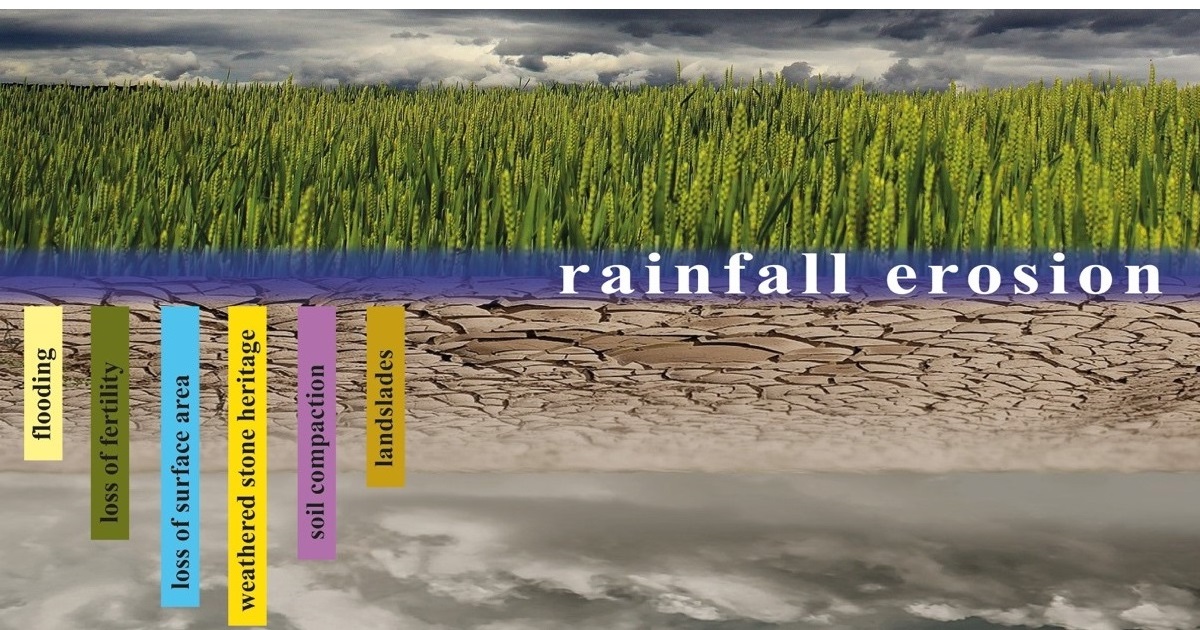New Challenges in Rainfall Erosion
A special issue of Water (ISSN 2073-4441). This special issue belongs to the section "Water and Climate Change".
Deadline for manuscript submissions: closed (10 January 2024) | Viewed by 1790

Special Issue Editors
Interests: rainfall characterization; measurements of rainfall; rainfall simulators; disdrometers; splash erosion; karstification; impacts of water on construction; fluid dynamics engineering; erosion; weather types
Special Issues, Collections and Topics in MDPI journals
Interests: soil and water conservation; surface runoff; watershed management; water erosion; rainfall
Special Issues, Collections and Topics in MDPI journals
Special Issue Information
Dear Colleagues,
Rainfall erosion is one of the most damaging factors in agricultural lands, as well as one of the most important concerns in fire areas. The erosive potential of rainfall can lead to loss of fertility of soils that are limited resources due to loss of surface area but also causes erosion damage to other vulnerable surfaces, such as weathered stone heritage, or forest roads and tracks or concrete structures. In addition, the movement of aggregates can lead to increased soil compaction and other phenomena such as flooding, decreased infiltration into the ground, and significant topographic changes. New tools such as more realistic rainfall simulators, the use of drones, satellite or lidar analysis, and new methodologies such as the measurement of the distance between certain parts of the vine and the soil can help us understand how we have evolved and what remains to be developed in order to contribute to the protection of vulnerable surfaces against water. In this Special Issue, we look forward to contributions with innovative methodologies that shed light on how to fight against water erosion.
Dr. María Fernández-Raga
Dr. Yang Yu
Dr. Ataollah Kavian
Guest Editors
Manuscript Submission Information
Manuscripts should be submitted online at www.mdpi.com by registering and logging in to this website. Once you are registered, click here to go to the submission form. Manuscripts can be submitted until the deadline. All submissions that pass pre-check are peer-reviewed. Accepted papers will be published continuously in the journal (as soon as accepted) and will be listed together on the special issue website. Research articles, review articles as well as short communications are invited. For planned papers, a title and short abstract (about 100 words) can be sent to the Editorial Office for announcement on this website.
Submitted manuscripts should not have been published previously, nor be under consideration for publication elsewhere (except conference proceedings papers). All manuscripts are thoroughly refereed through a single-blind peer-review process. A guide for authors and other relevant information for submission of manuscripts is available on the Instructions for Authors page. Water is an international peer-reviewed open access semimonthly journal published by MDPI.
Please visit the Instructions for Authors page before submitting a manuscript. The Article Processing Charge (APC) for publication in this open access journal is 2600 CHF (Swiss Francs). Submitted papers should be well formatted and use good English. Authors may use MDPI's English editing service prior to publication or during author revisions.
Keywords
- rainfall erosion
- splash erosion
- agriculture soil loss
- erosion of heritage
- erosion in burnt areas
- measurement of erosion
- erosion in roads
Benefits of Publishing in a Special Issue
- Ease of navigation: Grouping papers by topic helps scholars navigate broad scope journals more efficiently.
- Greater discoverability: Special Issues support the reach and impact of scientific research. Articles in Special Issues are more discoverable and cited more frequently.
- Expansion of research network: Special Issues facilitate connections among authors, fostering scientific collaborations.
- External promotion: Articles in Special Issues are often promoted through the journal's social media, increasing their visibility.
- e-Book format: Special Issues with more than 10 articles can be published as dedicated e-books, ensuring wide and rapid dissemination.
Further information on MDPI's Special Issue polices can be found here.







